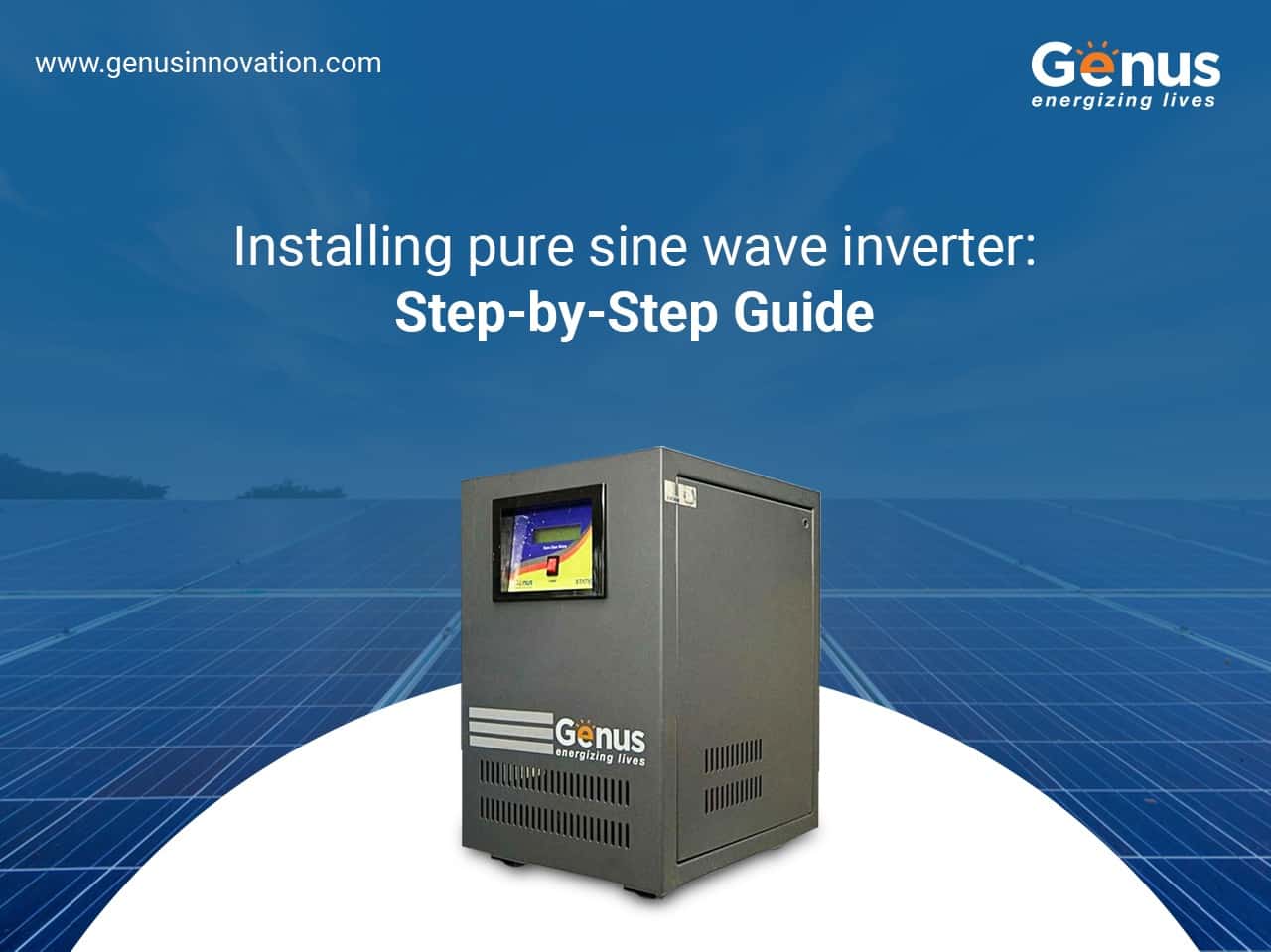If you're thinking about purchasing an inverter for your home but are concerned about the hassle of installation, don't panic—installing it yourself is entirely doable. By taking care of the installation yourself, you can avoid labor costs and sidestep potential pitfalls. If you're eager to learn how to install a sine wave inverter at home, keep reading to understand what a pure sine wave inverter is and how to go about setting it up. Just remember to follow the guidelines provided in the installation manual.

## What Is A Pure Sine Wave Inverter?
A pure sine wave inverter is a device that converts direct current (DC) into alternating current (AC), and vice versa when necessary. This conversion process delivers high-quality electricity similar to utility standards, ensuring your home appliances receive the proper power supply. If you’ve looked into solar products for your home, you might already be familiar with the three primary components: batteries, alternators, and sine wave inverters. There are two main types of inverter technology: pure sine wave and modified sine wave. Pure sine wave inverters are typically more expensive than their modified counterparts, but they offer superior performance and efficiency.
Pure sine wave inverters are crafted from high-quality electronics and provide electric current with characteristics similar to those supplied by utility companies. This ensures that your appliances won’t overheat or suffer damage. Modified sine wave inverters, while cheaper, are less efficient and may not support all types of devices. Additionally, pure sine wave inverters often double as transformers. With this understanding of what a pure sine wave inverter is, let's move on to the installation process.
## Pure Sine Wave Inverter Installation
Having a reliable power supply during outages is essential. Setting up an inverter is a crucial part of establishing an alternative energy source. It’s important to note that inverters are sensitive to environmental factors such as temperature, moisture, and airborne contaminants. To ensure optimal performance, install your inverter in a cool, clean, and dry location with adequate ventilation.
Here are the steps you can follow to install a sine wave inverter at home:
### Step 1: Planning Your Installation
The initial step in installing a sine wave inverter involves mapping out the entire area where the inverter will be placed. Consider the placement of the inverter unit and any auxiliary switches. Ensure the shortest possible distance between the inverter and the battery system to maximize the efficiency of your setup. Preparing a checklist of tasks and gathering all necessary materials and tools ahead of time can streamline the process.
### Step 2: Installing the Fuse Holder and Routing Cables
Next, install a fuse holder for the battery wiring, making sure it’s appropriately sized and positioned within 18 inches of the batteries. If feasible, seek professional assistance for the final connections to the inverter, as these carry significant current. Using the correct crimping tools or hiring an electrician can help you complete this task effectively. Thread the cables through the newly cut holes in the inverter and ensure the cable ends are protected with rubber boots. Whether you’re a seasoned electrician or a DIY enthusiast, referring to the installation guide can be invaluable.
### Step 3: Mounting the Inverter Securely
Properly mounting your inverter is just as important as choosing the right one for your home. Once you've identified the ideal spot for installation, securely mount the inverter in place. Ensure that the DC cables and inverter face are accessible for easy wiring. During installation, lock the wheels of the inverter case. After installation, verify that all necessary wires and cables are correctly attached. Install a solid shield around the inverter to protect it while maintaining proper ventilation.
### Step 4: Connecting the Battery to the Inverter
To connect a battery to the inverter, attach each terminal of the inverter to the corresponding terminals of the battery. Once connected, the inverter should immediately power up. That’s all there is to it when installing a pure sine wave inverter at home. With this knowledge, you can confidently purchase an inverter for your home without worrying about installation or other concerns.
For top-quality inverters, consider Genus Innovation’s range of products. Their inverters offer peace of mind and reliable power backup solutions. Reach out to us today to learn more about our premium power backup offerings.
Glass Bathroom Accessory Sets,White Bathing Set Glass Bottle,Grass Green Bathing Set Glass Bottle,Emerald Green Bath Set Glass Bottle
MingHui Houseware Company Limited , https://www.minghuihousewareltd.com